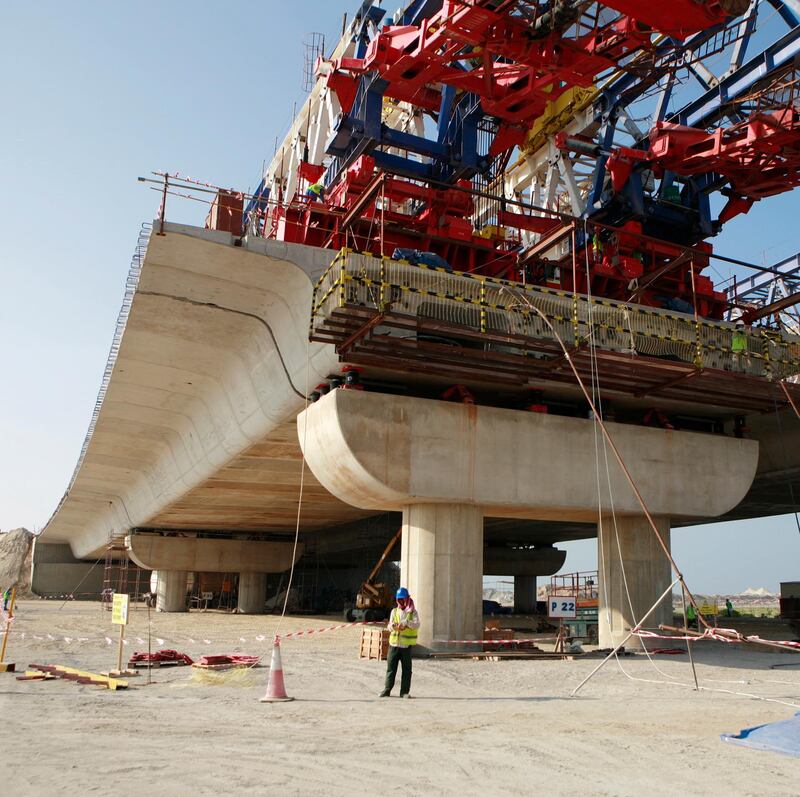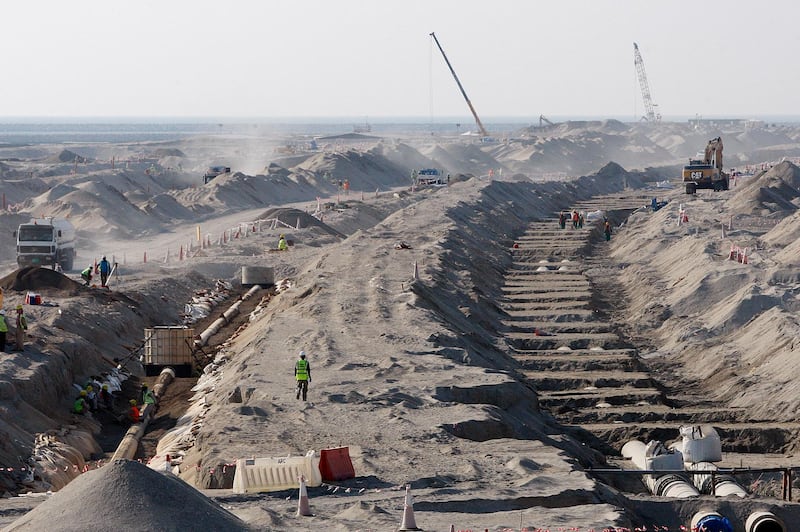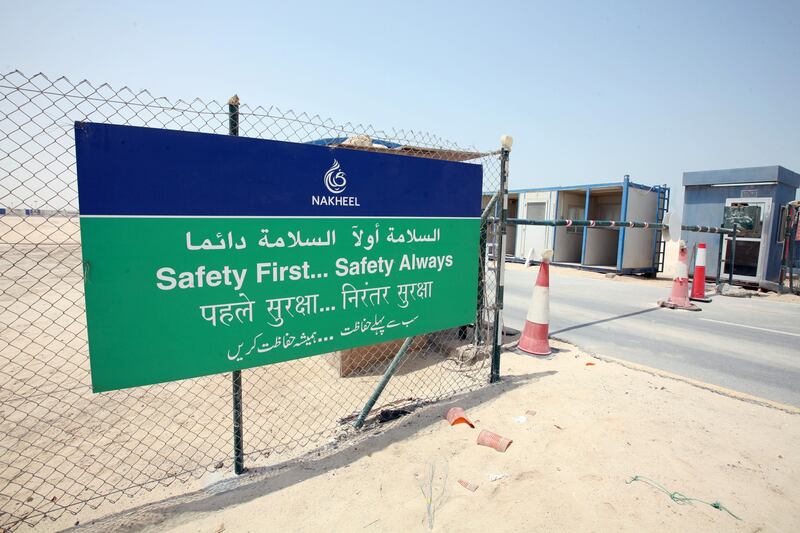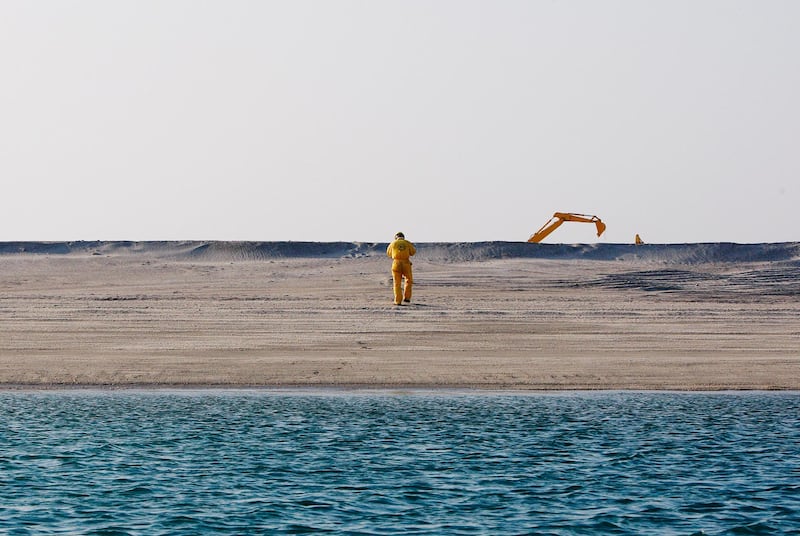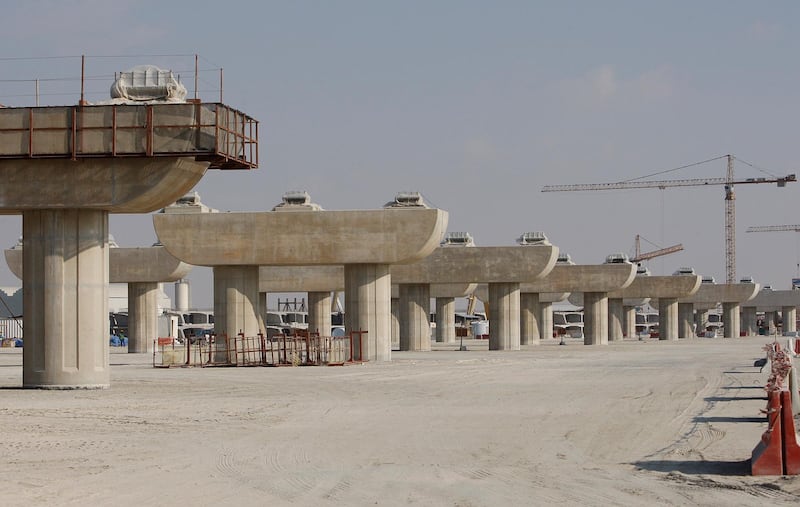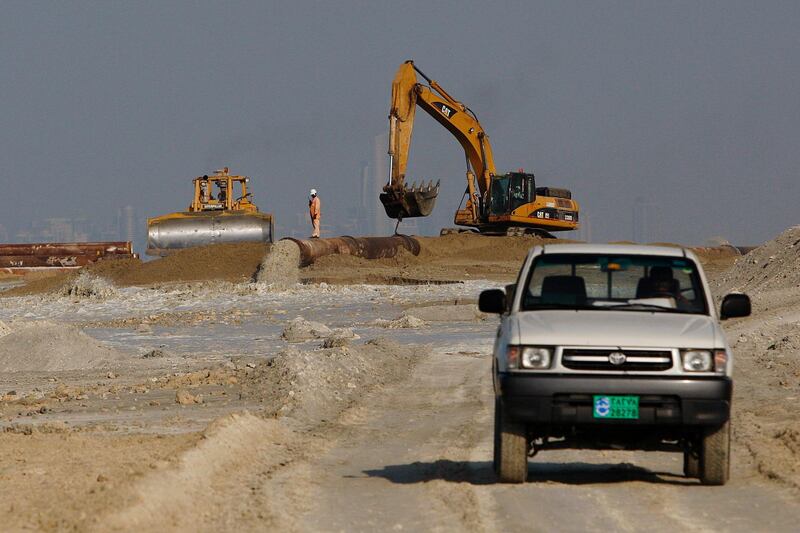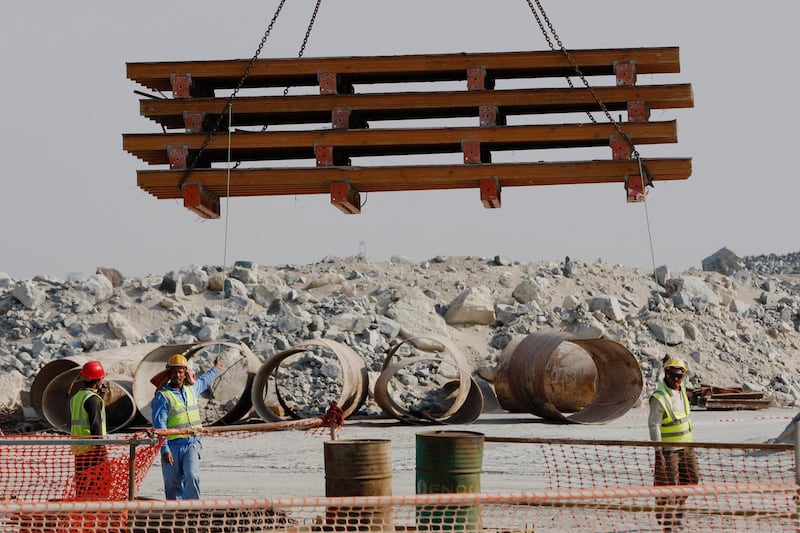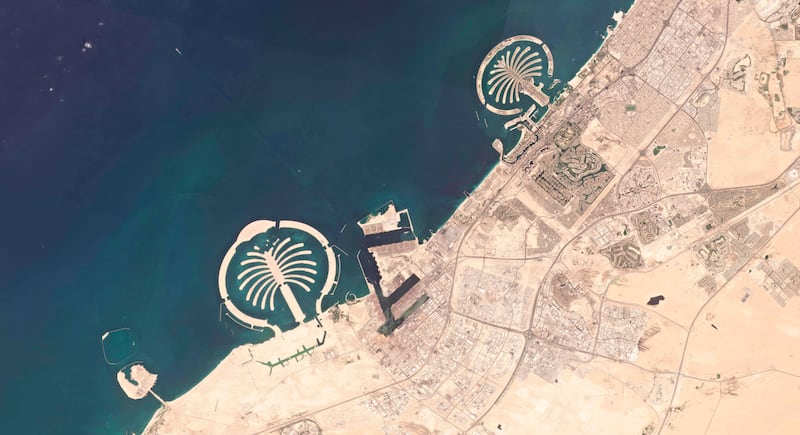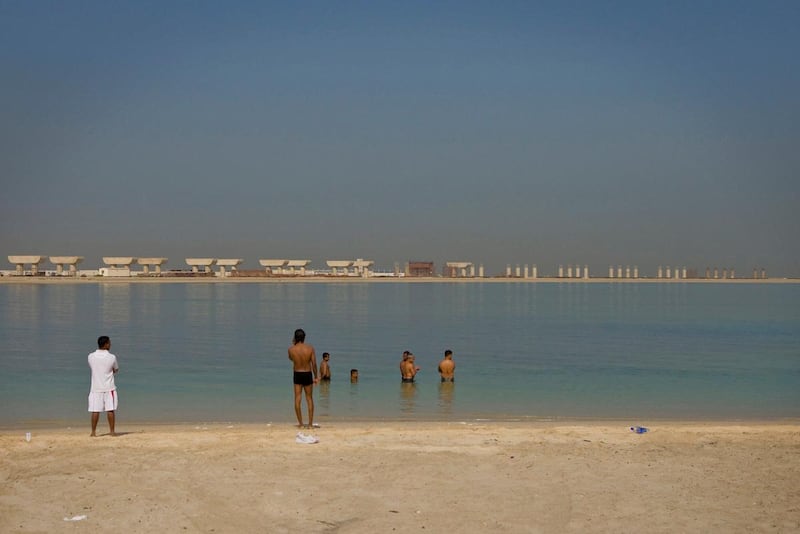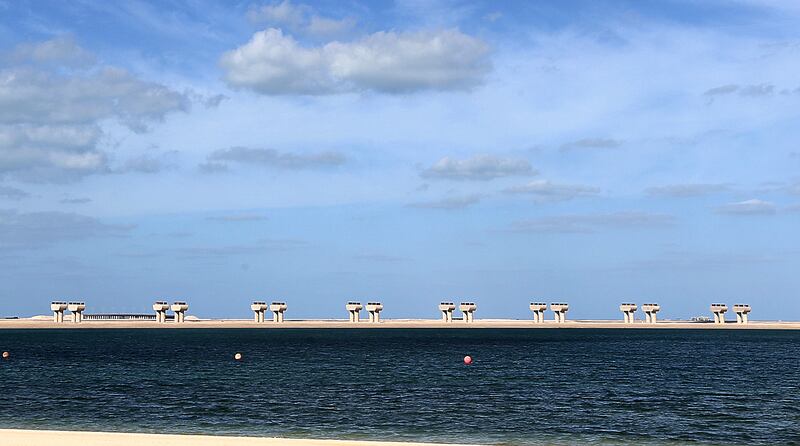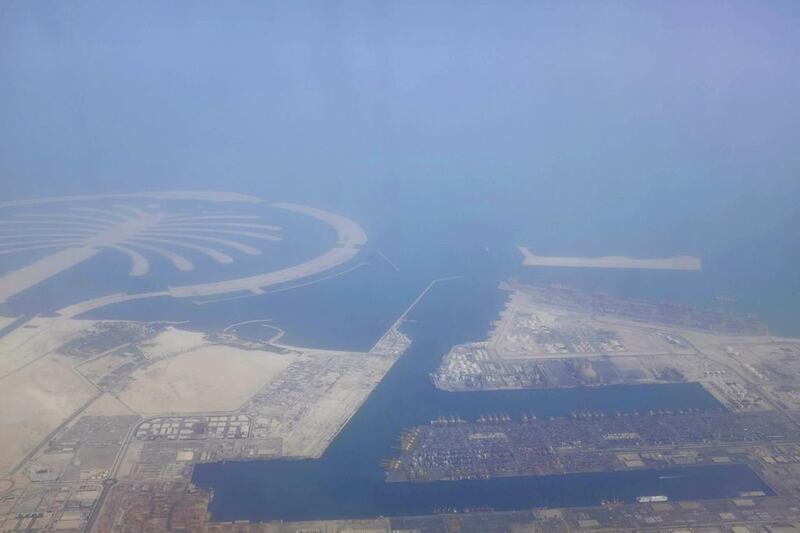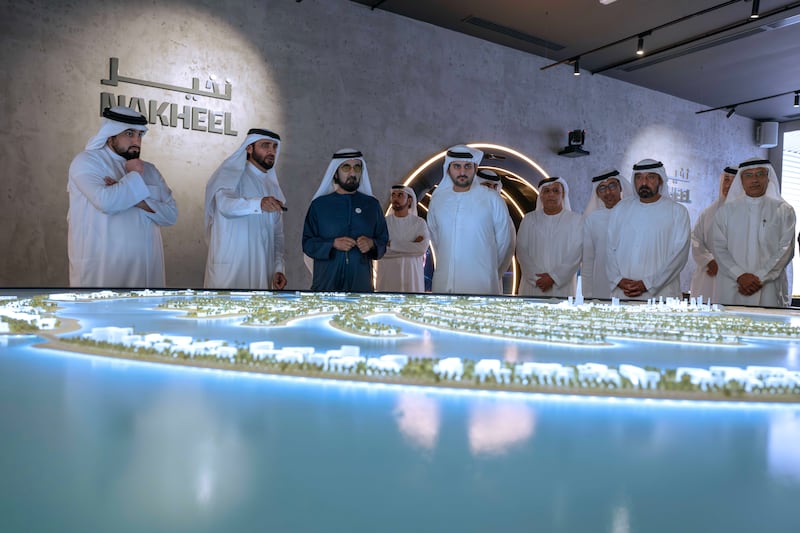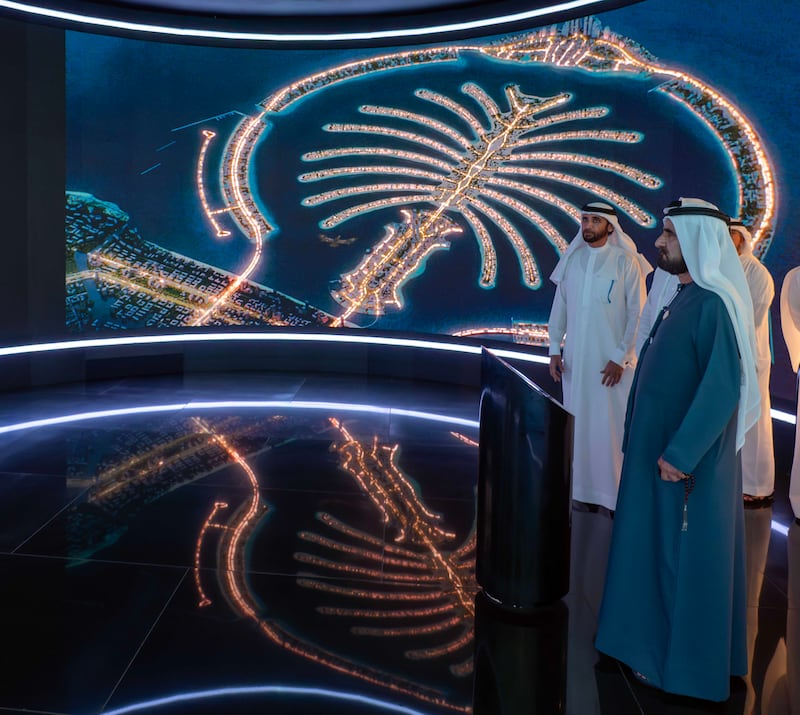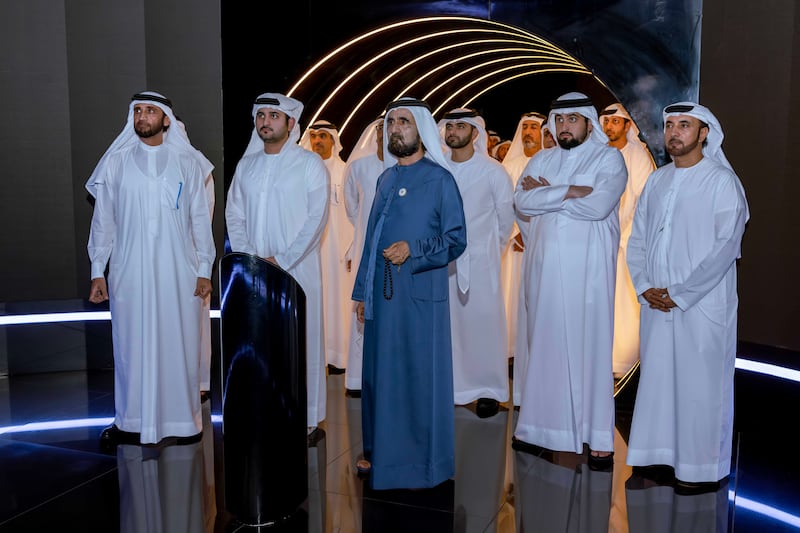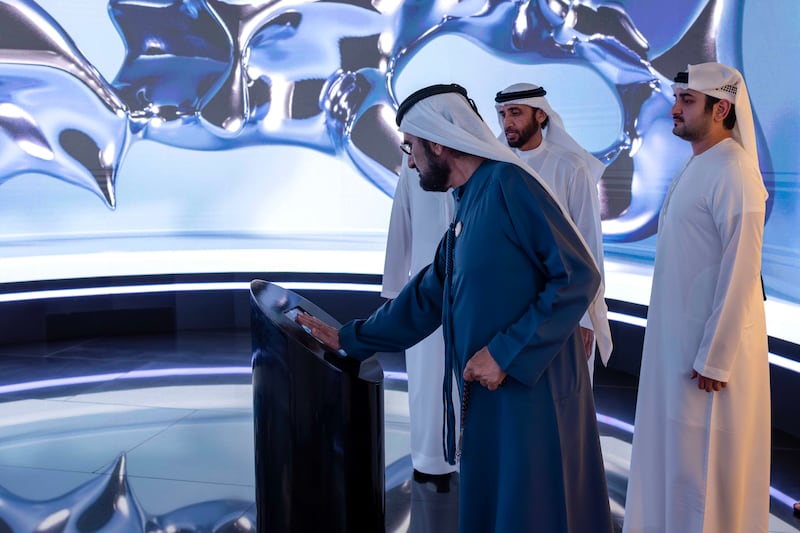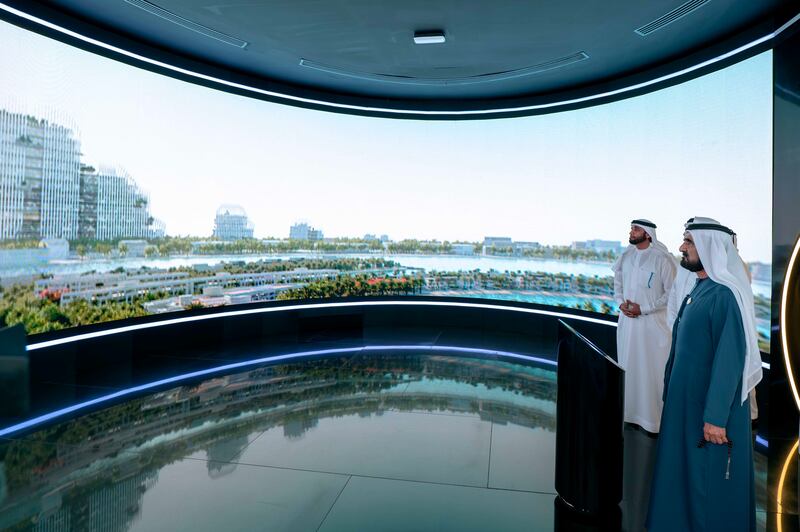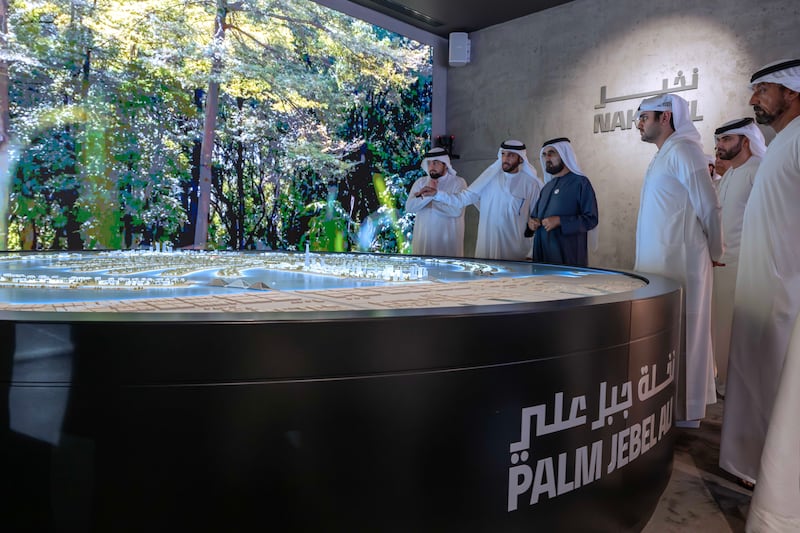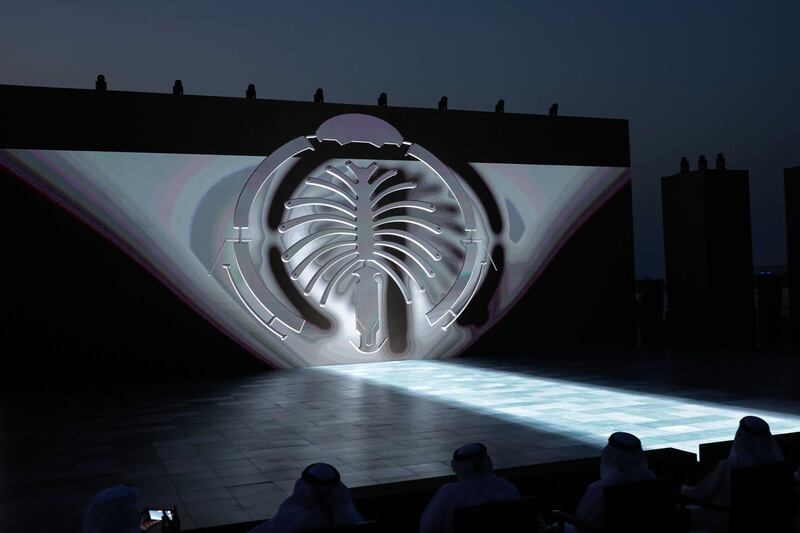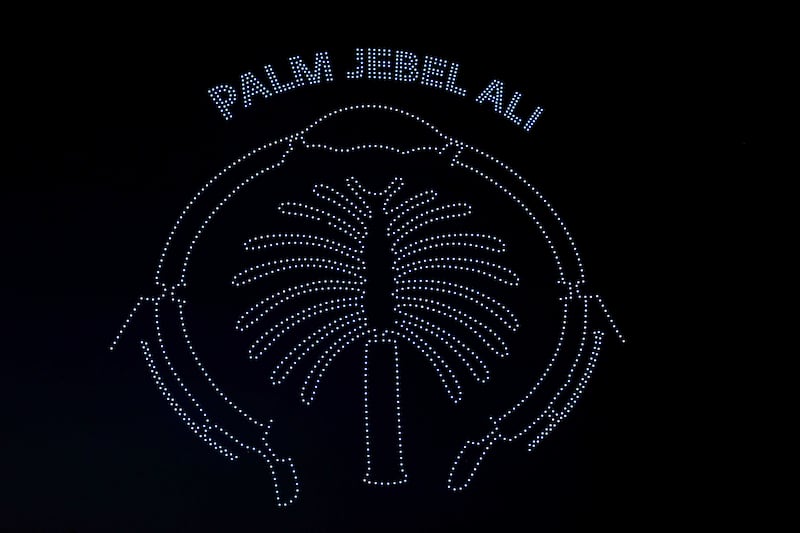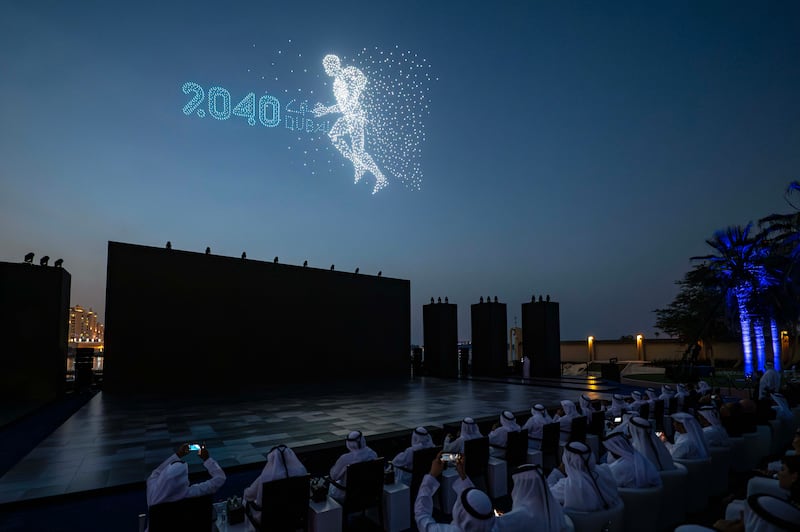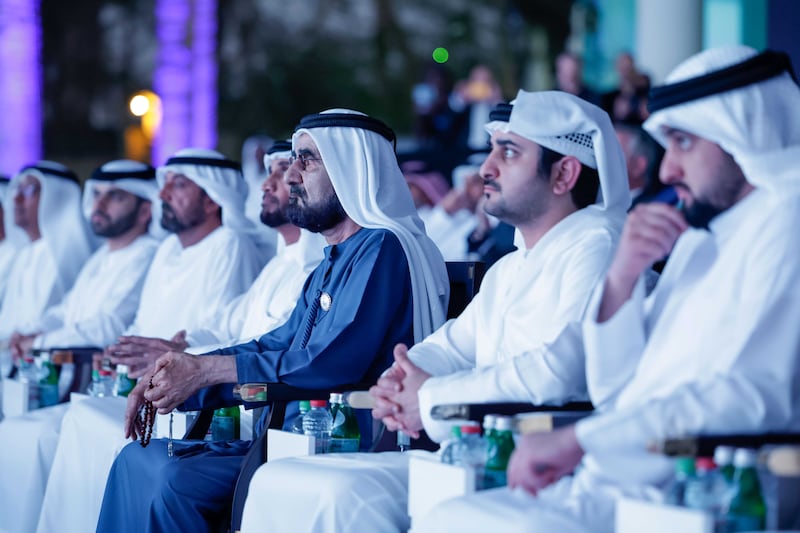Now reinvigorated and reimagined, the Palm Jebel Ali has been part of the Dubai landscape for more than 20 years.
Construction began in 2002 as part of a hugely ambitious series of artificial offshore islands that included Palm Jumeirah, The World and the Palm Deira.
At one stage, it was proposed some of the islands off the Palm Jebel Ali form the shape of a poem written by Sheikh Mohammed bin Rashid, Vice President and Ruler of Dubai.
The projects were a response to the city’s fast-growing population and a lack of highly desirable beachfront for development. Combined they were to add hundreds of seaside kilometres for new housing and leisure facilities.
Expense aside, creating them would be a huge engineering challenge. For the Palm Jebel Ali, Nakheel, the developer, appointed a Dutch dredging company, the Jan De Nul Group.
By 2006, a 17km breakwater 200 metres wide that would protect the project had been built. More than 10 million tonnes of rock was hauled over land from quarries in Ras Al Khaimah, then loaded into barges and dumped in the sea to form the barrier.
Other material came from the Jebel Ali Entrance Channel dredging works, previously carried out by Jan De Nul – a total of 200 million square metres of cap rock, sand, calcarenite and limestone.
Dubai's mighty ambitions
Offshore work began on the 6km “trunk” and the 17 fronds. The Palm Jebel Ali would be twice the size of The Palm Jumeirah, with a projected population of 250,000 – twice as big as Al Ain.
Jan De Nul used powerful cutting suction dredgers, which slice up material and pump it into the area to be deposited. They were followed by ships know as suction hopper dredges to form the final shape.
The machines had exotic names, like the Nina and Pinta, Christopher Columbus’s ships, and the 16th century cartographer Gerardus Mercator, but were highly complex, using Global Positioning System (GPS) satellite readings to create the precise shapes.
A publicity video from 2002 shows high-rise apartments and luxury villas connected by four-lane motorways, with “broad cafe-lined ocean promenades” where “an ocean sunset is an everyday experience”.
There would be three theme parks, operated by the American Busch Entertainment Corporation, including Sea World and Busch Gardens, to be ready by 2021.
All was progressing well until the 2008 financial crisis. The downturn hit the global property market hard and Dubai was no exception. As prices for the first homes on the Palm Jebel Ali fell by up to 40 per cent, it was clear that the Palm, as originally envisaged, was no longer a commercial proposition. Work was suspended, with Nakheel offering investors alternative properties on other projects.
For the next decade, the Palm Jebel Ali sat empty, a vast monument visible from space. Nearby, The Palm Jumeirah was now successful, with the opening of Atlantis, The Palm a symbol of Dubai’s confidence in the future.
Progress was slower on The World Islands, while the Palm Deira, only partially built, was reimagined as Dubai Islands in 2013.
Part of the reason for the delay on the Palm Jebel Ali was its sheer size but also complex legal issues between Nakheel and some investors that had to be resolved. In 2018, the then Nakheel chief executive Sanjay Manchanda confirmed the project was still in long-term development but that there were no current plans to resume work.
Four years later, it was revealed that Nakheel was planning to relaunch and rebrand the Palm Jebel Ali, completely revisiting the master plan. The pandemic of 2020 had once again changed the investment landscape, which together with the war in Ukraine made Dubai even more attractive as a global destination.
After 21 years, the revised project has now been approved by Sheikh Mohammed and is once again ready to take its place in the sun.
